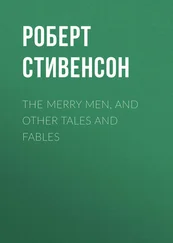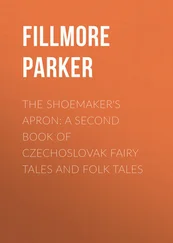Gustavo Bécquer - Legends, Tales and Poems
Здесь есть возможность читать онлайн «Gustavo Bécquer - Legends, Tales and Poems» — ознакомительный отрывок электронной книги совершенно бесплатно, а после прочтения отрывка купить полную версию. В некоторых случаях можно слушать аудио, скачать через торрент в формате fb2 и присутствует краткое содержание. Жанр: foreign_prose, literature_19, foreign_antique, на английском языке. Описание произведения, (предисловие) а так же отзывы посетителей доступны на портале библиотеки ЛибКат.
- Название:Legends, Tales and Poems
- Автор:
- Жанр:
- Год:неизвестен
- ISBN:нет данных
- Рейтинг книги:5 / 5. Голосов: 1
-
Избранное:Добавить в избранное
- Отзывы:
-
Ваша оценка:
- 100
- 1
- 2
- 3
- 4
- 5
Legends, Tales and Poems: краткое содержание, описание и аннотация
Предлагаем к чтению аннотацию, описание, краткое содержание или предисловие (зависит от того, что написал сам автор книги «Legends, Tales and Poems»). Если вы не нашли необходимую информацию о книге — напишите в комментариях, мы постараемся отыскать её.
Legends, Tales and Poems — читать онлайн ознакомительный отрывок
Ниже представлен текст книги, разбитый по страницам. Система сохранения места последней прочитанной страницы, позволяет с удобством читать онлайн бесплатно книгу «Legends, Tales and Poems», без необходимости каждый раз заново искать на чём Вы остановились. Поставьте закладку, и сможете в любой момент перейти на страницу, на которой закончили чтение.
Интервал:
Закладка:
Ex. Olas gi'gantes qu^e^os rom'péis bra'mando, p. 183, LII, l. 1.
If it is difficult to classify a hendecasyllable because it has accents on the fourth, sixth, eighth, and tenth syllables, one must decide on the prominence of the accents from pauses, or from emphasis. The hendecasyllable,
La vida es 'corta, 'sí; muy 'largo el 'arte,
would belong to the first class on account of the emphasis of sí , while the verse,
La vida es 'corta, 'corta; 'largo el 'arte,
would belong to the second class on account of the pause after the fourth and the emphasis on the eighth. The accent on the sixth is, then, not constituent, but supernumerary.
10. All meters thus far have
a. Obligatory (constituent) accents.
b. Facultative (supernumerary) accents.
c. A necessary termination in a combination of an unaccented plus an accented plus an unaccented syllable (– / —). The dissyllable is the only exception.
The facultative accent is opposed to the regular recurrence in each line of dissyllabic and trisyllabic elements, which elements caused the rhythm of Latin verse.
Spanish rhythm is a rhythm of series, of strophes, not a rhythm of regularly recurring accents within a verse.
Verses of ten or twelve syllables, however, lend themselves more readily to rhythm from regularly recurring stress.
11. Decasyllabic Verse : A verse of ten syllables may be formed by the triple repetition of the trisyllable – — /. One extra unaccented syllable is admissible when the verse is llano ; and two when the verse is esdrújulo .
Scheme:
– — / – — / – — , agudo.
– — / – — , – — , – llano.
– — / – — / – — / – — esdrújulo.
12. Dodecasyllable Verse : A verse of twelve syllables, with the stress on the second, fifth, eighth, and eleventh syllables, makes a dodecasyllable of amphibrachs. This dodecasyllable has a short metrical pause after the sixth syllable, and a longer one after the twelfth.
Scheme:
– / – — / – || – / – — / agudo.
– / – — / – || – / – — / – llano.
– / – — / – / – — / – — esdrújulo.
13. Verses of different length do not readily intermingle. There are some measures, however, which are used much together.
a. Verses of eleven syllables are used with those of seven or of five syllables.
b. Verses of eight syllables are used with those of four syllables.
c. Verses of ten syllables are used with those of twelve (p. 164, I); and also with those of six (p. 167, VII). These meters lend themselves to regularly recurring stress more readily than any others.
III. CAESURAL PAUSES
The caesura is an important, though not essential, element in Spanish verse. In verses of eleven or twelve syllables, however, the caesura is usually employed to give a break in a determined place. The caesura requires a strong accent on the syllable preceding it, and does not prevent synalepha.
Ex. Si al resonar confus|o^á tus espaldas , p. 171, XVI, l. 7.
Ex. Sabe que, ocul|to^entre las verdes hojas , p. 171, XVI, l.5.
The disposition of the caesural pauses determines the harmony of the versification, and usually varies with the accents so as to avoid monotony in the verse.
IV. RHYME
N.B. For purposes of Rhyme, words may be divided into two classes:
First , words ending in a vowel.
Second, words ending in a consonant.
Rhymes are called feminine, if the rhyme words end in a vowel.
Rhymes are called masculine, if the rhyme words end in a consonant.
NOTE: Final s and final n, especially in the plural of nouns and in verbs, do not count. Therefore, penas and arenas would form a feminine rhyme.
There are two kinds of rhyme: Consonance and Assonance.
Consonantal rhyme is one in which all the letters, vowels and consonants, are the same from the accented syllable to the end of the word, e.g. bruma—espuma ; flor—amor .
In consonantal rhyme both consonants and vowels should agree exactly ( sonante—errante ); b and v can, however, rhyme together, since they represent the same sound, e.g. estaba—esclava ; haba—clava .
The following are a few general rules for consonantal rhyme.
1. A word should not rhyme with itself. Sometimes, however, a simple word rhymes with a derivative ( menor—pormenor ) or two derivatives with each other ( menosprecio—desprecio ).
2. The tenses of verbs which end in -aba, -ando, -áis, -éis; the present and past participles of regular verbs; adverbs with the termination -mente; verbal nouns ending in -miento, -ción, and other similar endings,—should not rhyme together.
3. Words similar in sound and form but distinct in meaning may rhyme.
son ('sound')— son ('are')
4. If an unaccented weak vowel (i, u) precedes or follows a strong vowel in the same syllable of a word, it is absorbed by the strong vowel, and does not count in the rhyme. Therefore, vuelo and cielo rhyme; also muestra and diestra .
When the vowels from the accented syllable to the end of the word are the same, but the consonants are different, the rhyme is called assonance. Therefore, inflaman and pasa assonate in á-a; negros and creo in e-o.
1. In words accented on the last syllable ( agudas ), the assonance is that of the last syllable only, e.g. perdón—espiró ; azul—tú .
2. In words accented on the antepenult ( esdrújulas ) or on a preceding syllable, only the accented syllable and the final syllable count for purposes of assonance. Therefore, fábula and lágrimas assonate in á-a; trémulo and vértigo assonate in é-o.
3. Words accented on the last syllable ( agudas ) cannot assonate with words accented on the penult ( llanas ), or with those accented on the antepenult ( esdrújulas ) or upon any preceding syllable.
4. In words llanas or esdrújulas the assonance is of two vowels only. In diphthongs the accented vowel only is considered if the diphthong occur in an accented syllable. Therefore, verte and duermes assonate in e-e; baile and parte assonate in a-e.
5. Words llanas may assonate with words accented on the antepenult ( esdrújulas ). Therefore, pórtico and olmos assonate in ó-o.
6. For purposes of assonance little use is made of words accented on a syllable preceding the antepenult.
7. In a final accented or unaccented syllable u and i are absorbed, for purposes of assonance, by a preceding or following a, o, or e. Therefore, sabia and gratia assonate in á-a; igual and mar assonate in a, pleita and pliega assonate in é-a.
8. If in assonance a weak vowel is united in a diphthong with a strong vowel, the assonance is called compound assonance , e.g. guarda—fatua .
9. Assonance between two single vowels is called simple assonance , e.g. sangre—trae .
This distinction is of little value, however, for verses in simple and compound assonance alternate constantly.
10. In the case of two strong vowels forming a diphthong after an accented syllable, the following rules apply.
a. a in a final unaccented syllable predominates over a preceding or succeeding o in the same syllable. Therefore, Astárloa and Dánao assonate in á-a.
Читать дальшеИнтервал:
Закладка:
Похожие книги на «Legends, Tales and Poems»
Представляем Вашему вниманию похожие книги на «Legends, Tales and Poems» списком для выбора. Мы отобрали схожую по названию и смыслу литературу в надежде предоставить читателям больше вариантов отыскать новые, интересные, ещё непрочитанные произведения.
Обсуждение, отзывы о книге «Legends, Tales and Poems» и просто собственные мнения читателей. Оставьте ваши комментарии, напишите, что Вы думаете о произведении, его смысле или главных героях. Укажите что конкретно понравилось, а что нет, и почему Вы так считаете.












